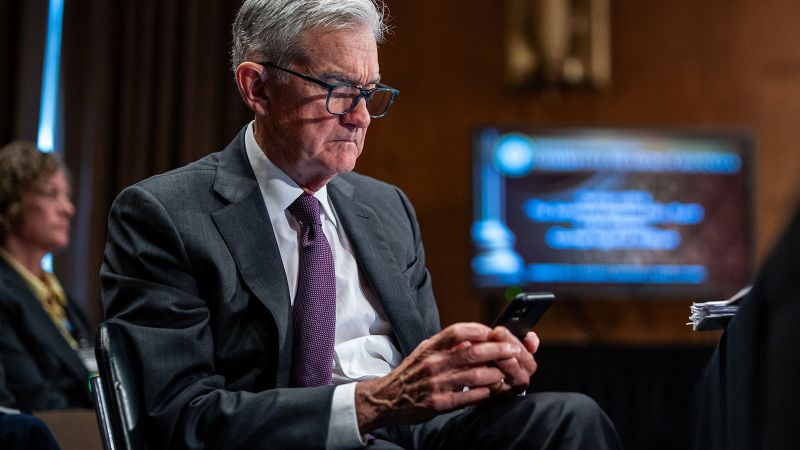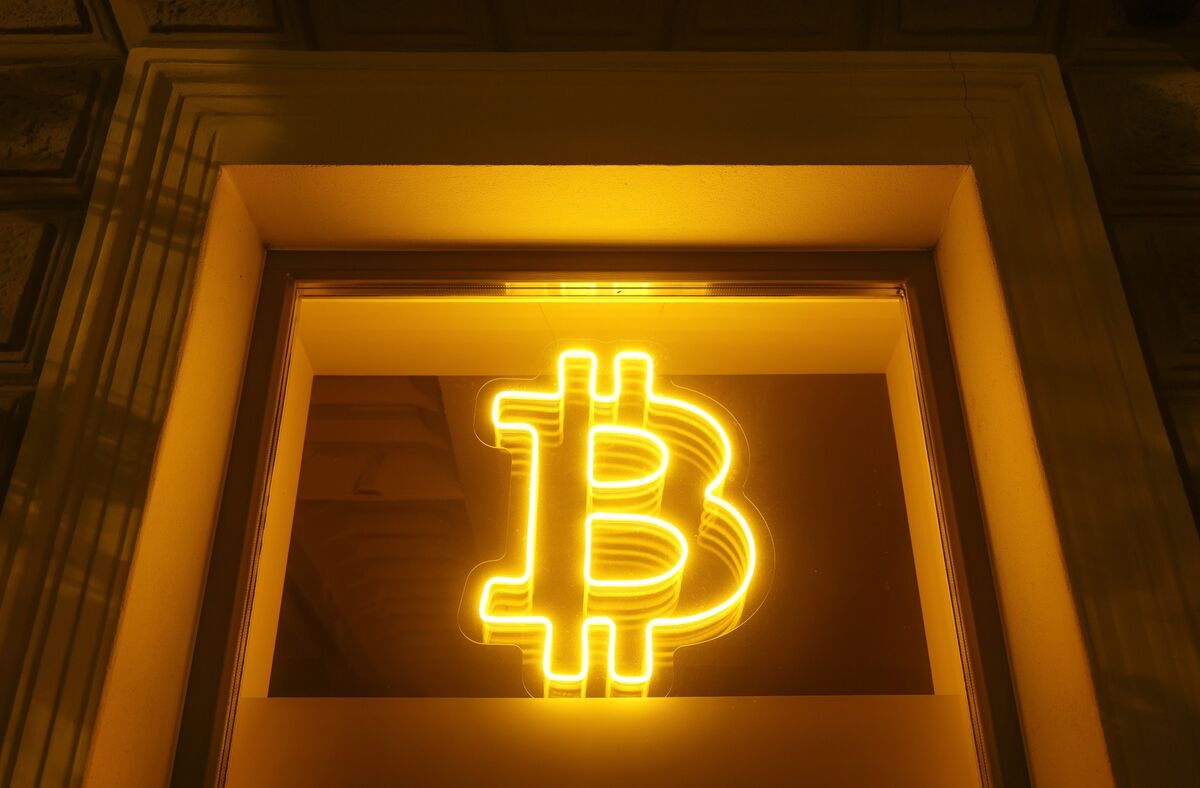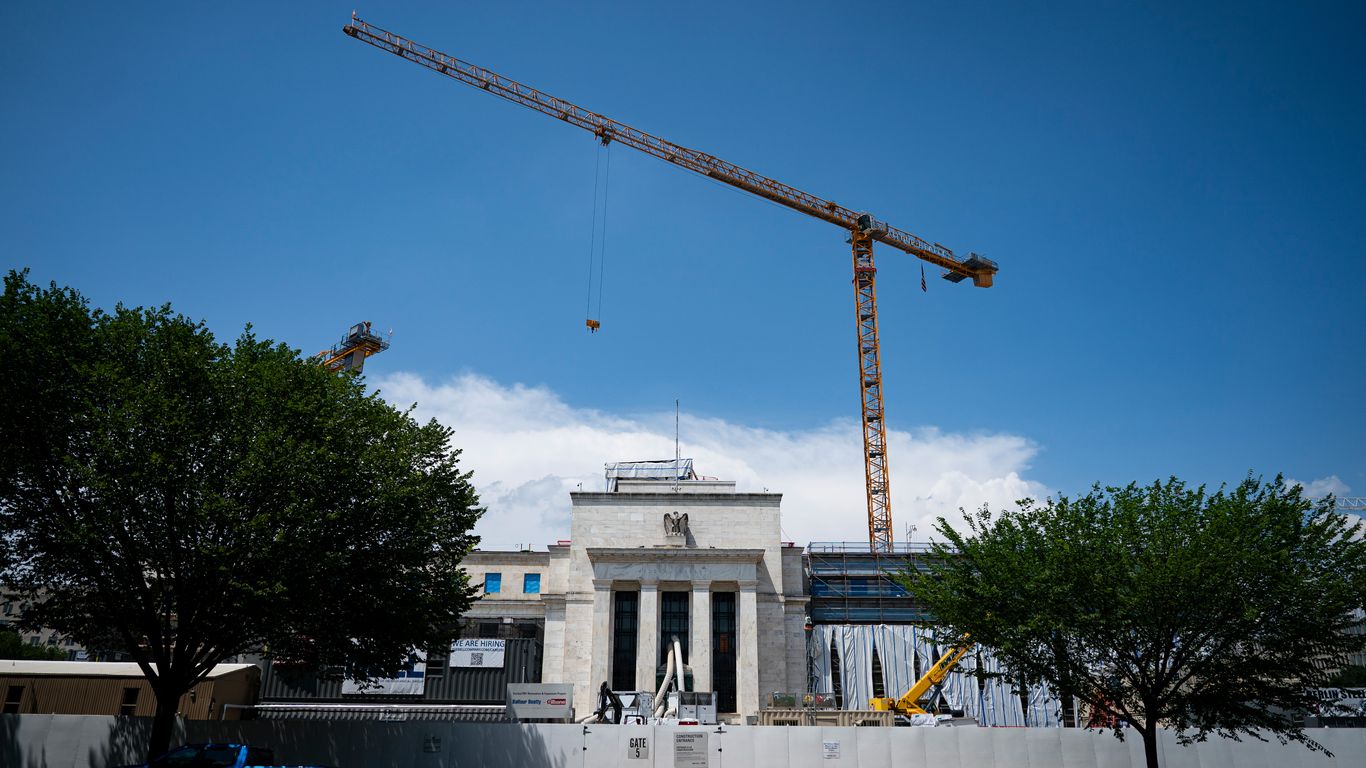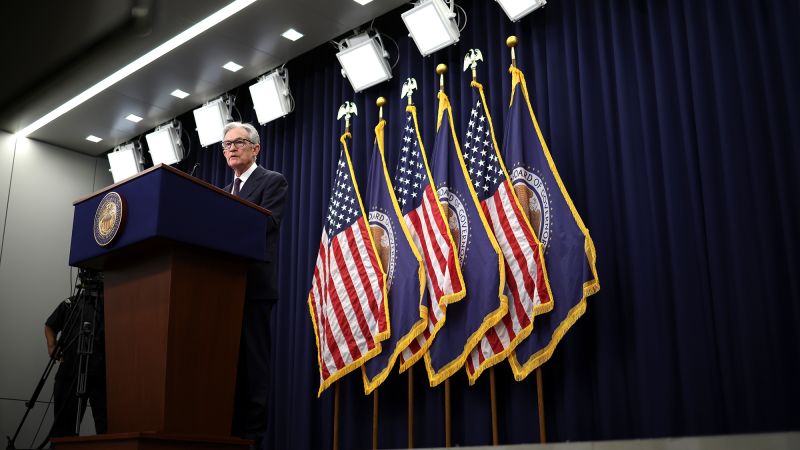Bitcoin Value Dip Ahead of Powell Remarks

Introduction
Bitcoin, the world’s largest cryptocurrency, is experiencing a dip in its value ahead of remarks from Federal Reserve Chair Jerome Powell at the Jackson Hole Economic Symposium. The digital asset is down almost 5% from its all-time high just one week ago, causing concern among investors and traders.
Key Details
The dip in Bitcoin's value comes after a period of significant growth and stability. In the past year, the cryptocurrency has seen a surge in popularity and acceptance, with many major companies and financial institutions investing in it. However, with this recent decline, experts are questioning the long-term sustainability of its value.
Some speculate that the dip could be a result of investors selling off their holdings in anticipation of Powell's speech, which may provide insight into the Fed's stance on cryptocurrencies and their potential impact on the traditional financial system. Others believe the decline is a natural correction after the rapid rise in Bitcoin's value.
Impact
The dip in Bitcoin's value is a reminder of the volatility and unpredictability of the cryptocurrency market. As investors and traders eagerly await Powell's remarks, the outcome could have a significant impact on the future of Bitcoin and other digital assets. Depending on the Fed's stance and any potential regulations or restrictions, the value of Bitcoin could experience further fluctuations in the coming days and weeks.
As the world continues
About the People Mentioned
Jerome Powell
Jerome H. Powell is the Chair of the Board of Governors of the Federal Reserve System, the central bank of the United States, a position he has held since February 2018 following his initial appointment by President Donald Trump and subsequent reappointment by President Joe Biden for a second four-year term in May 2022[2][5]. He also chairs the Federal Open Market Committee, the Fed’s principal monetary policymaking body[2]. Powell’s tenure spans some of the most significant economic challenges in recent U.S. history, including the post-Great Recession recovery and the financial fallout from the COVID-19 pandemic[3][6]. Born on February 4, 1953, in Washington, D.C., Powell holds an AB in politics from Princeton University (1975) and a law degree from Georgetown University (1979), where he was editor-in-chief of the Georgetown Law Journal[2]. His career before the Fed included roles as a lawyer and investment banker in New York City, a partner at The Carlyle Group (1997–2005), and a visiting scholar at the Bipartisan Policy Center focusing on fiscal issues[2][5]. He served as both Assistant Secretary and Under Secretary of the Treasury under President George H.W. Bush, with responsibilities for financial institutions and the Treasury debt market[2][5]. Powell was first nominated to the Federal Reserve Board by President Barack Obama in 2012 and assumed office in May of that year, later being reappointed for a term ending January 31, 2028[2][8]. As Fed Chair, he initially continued the policy of gradually raising interest rates—a process begun under his predecessor, Janet Yellen—to return monetary policy to more normal levels after the 2007–08 financial crisis[3]. This approach drew criticism from President Trump, who publicly opposed further rate hikes, but Powell maintained that such measures were necessary to prevent inflation and ensure long-term stability[3]. Powell’s leadership was again tested during the COVID-19 pandemic, when he led the Fed in slashing interest rates to near zero, launching emergency lending programs, and purchasing corporate debt to stabilize financial markets—actions that significantly expanded the central bank’s role in the economy[3]. Despite political pressures from both Democratic and Republican administrations, Powell has been praised for his steady, data-driven approach to monetary policy[6]. He resides in Chevy Chase, Maryland, with his wife and three children[6]. As of 2025, Powell remains a central figure in U.S. and global economic policy, overseeing the Fed’s efforts to balance inflation control with support for economic growth amid ongoing uncertainties in the financial landscape[2][5].
About the Organizations Mentioned
Federal Reserve
## Overview and Mission The Federal Reserve, often called the "Fed," is the central bank of the United States, established by Congress in 1913 to provide the nation with a safer, more flexible, and stable monetary and financial system[1]. Its mission centers on a dual mandate from Congress: to promote maximum employment and maintain price stability, ensuring the dollar retains its value over time[1]. The Fed operates through a unique hybrid structure, combining a national Board of Governors in Washington, D.C., with 12 independent regional Reserve Banks, including institutions like the Cleveland Fed[1]. This decentralized setup allows the Fed to closely monitor economic conditions across diverse regions, industries, and communities, while maintaining independence from short-term political influences[1]. ## Key Functions The Fed’s responsibilities are broad and vital to the U.S. economy. It conducts monetary policy—primarily by influencing interest rates—to achieve its employment and inflation goals[2]. The Fed also supervises and regulates banks to ensure the safety and soundness of the financial system, works to minimize systemic risks, and fosters efficient payment and settlement systems[2]. Additionally, it promotes consumer protection and community development, addressing emerging issues through research, supervision, and enforcement of consumer laws[2]. ## History and Evolution The Federal Reserve is the third central bank in U.S. history, following two failed attempts in the 19th century[1]. Its creation was a response to the financial turbulence of the early 20th century, aiming to prevent crises and stabilize the economy. Over time, the Fed has evolved, adopting more transparent and inclusive policymaking processes. For example, it now conducts regular reviews of its monetary policy framework, engaging with academics, businesses, and the public to refine its strategies and communications[3][5]. ## Recent Developments and Achievements In 2025, the Fed completed its second major review of its monetary policy strategy, tools, and communications, reaffirming its commitment to transparenc
Jackson Hole Economic Symposium
## Overview of the Jackson Hole Economic Symposium The **Jackson Hole Economic Symposium** is an annual international conference sponsored by the Federal Reserve Bank of Kansas City. It is one of the most prestigious economic gatherings globally, often described as "the world's most exclusive economic get-together" by *The New York Times*[1]. The symposium brings together central bankers, academics, journalists, financial industry leaders, and government officials from around the world to discuss long-term policy issues[1][2]. ## History and Key Aspects The symposium was first held in 1978 and has been conducted annually in Jackson Hole, Wyoming, since 1981. It was initially chosen for its scenic location, which was appealing to Paul Volcker, the then-Federal Reserve Chairman, who enjoyed fly fishing in the area[1]. The event is known for fostering candid discussions among its participants, with a focus on global economic trends and future directions[3][4]. ## Key Achievements and Current Status Each year, the symposium focuses on a specific theme, with recent topics including **"Labor Markets in Transition: Demographics, Productivity, and Macroeconomic Policy"** in 2025[4][7]. The event has been pivotal in shaping global economic policies, with significant announcements often made during the conference[3]. Notably, Federal Reserve Chair Jerome Powell has frequently attended and provided insights into the Fed's stance on monetary policy[3]. ## Notable Aspects - **Global Representation**: The symposium attracts participants from over 70 countries, ensuring diverse perspectives on global economic issues[1]. - **Limited Attendance**: With only about 120 attendees, the event maintains exclusivity to encourage open discussion among participants[4]. - **Public Access to Information**: Papers and transcripts from the symposium are made available online for public access[2]. The Jackson Hole Economic Symposium remains a crucial platform for policymakers and economists to exchange ideas, making it a significant event in the business
:max_bytes(150000):strip_icc()/GettyImages-22190682981-9563924359cc4088b44ca0a6570f6920.jpg)

:max_bytes(150000):strip_icc()/GettyImages-2227770587-85646abe295c437e852bee50f11ee9d9.jpg)









